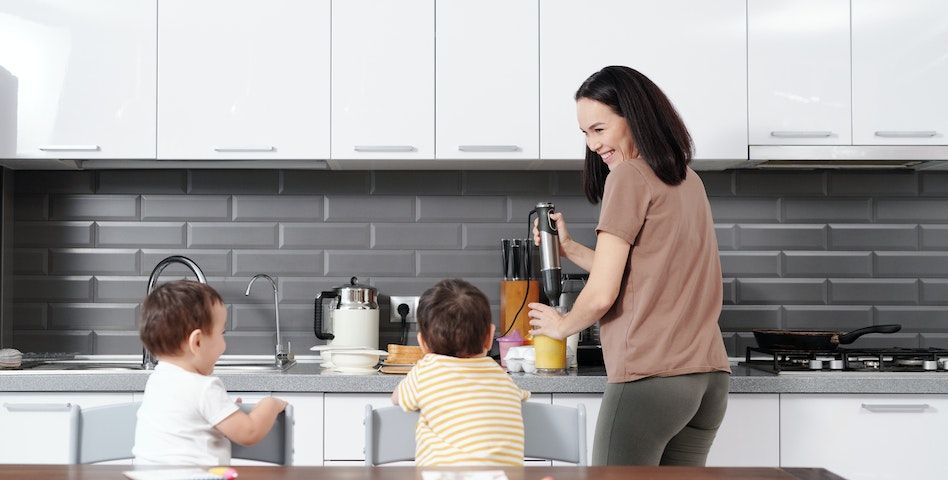(Untitled)
1. Introduction
A food processor is an essential appliance for any kitchen. It is a versatile kitchen tool that can be used for various food-related tasks such as chopping, blending, pureeing, and kneading. It is an all-in-one appliance that can help you save time and effort when it comes to preparing meals. In this buyers guide, we will provide you with information on what to look for when purchasing a food processor, so that you can make an informed decision when making your purchase.
a. What is a Food Processor?
A food processor is a kitchen appliance that is used to perform a variety of food-related tasks such as chopping, blending, pureeing, and kneading. It consists of a motorized base, a bowl, and various blades and discs that can be used to perform different functions. The motorized base powers the blades and discs, allowing the user to quickly and easily perform the desired tasks.
b. Benefits of Food Processors
Food processors are a great time-saver in the kitchen. They can help you quickly and easily prepare ingredients for a variety of dishes. With a food processor, you can chop, blend, puree, and knead ingredients in a fraction of the time it would take to do these tasks by hand. They also help to make food preparation easier, as you don’t have to worry about manually chopping, blending, or kneading ingredients. Food processors are also great for making sauces, soups, and other dishes that require ingredients to be blended together.

2. Types of Food Processors
When it comes to food processors, there are several types available. In this section, we'll go over the four main types of food processors, their benefits, and how to choose the right one for your needs.
a. Stand Food Processors
Stand food processors are the most common type of food processor. They usually come with a base, a bowl, and a lid, and are powered by an electric motor. On top of the base is a control panel, where you can adjust the speed of the motor and choose from a variety of settings. These processors are ideal for large-scale food processing, as they can chop, grind, and puree large amounts of food quickly and easily.
b. Hand Food Processors
Hand food processors are smaller and more portable than stand food processors. They typically come with a bowl, a lid, and a handle. They are usually powered by an electric motor, but some models can be manually operated. Hand food processors are ideal for smaller batches of food, as they can chop, blend, and mix smaller amounts of food quickly and easily.
c. Immersion Blenders
Immersion blenders are handheld blenders that are designed for blending and pureeing soups, sauces, and other mixtures. They typically come with a long shaft, a blade attachment, and a handle. Immersion blenders are ideal for blending and pureeing single-serve portions of food, as they can quickly and easily blend and puree ingredients without splashing or spilling.
d. Blenders
Blenders are the most versatile type of food processor. They typically come with a base, a jar, and a lid, and are powered by an electric motor. On top of the base is a control panel, where you can adjust the speed of the motor and choose from a variety of settings. Blenders are ideal for making smoothies, soups, sauces, and other mixtures, as they can quickly and easily blend ingredients together.
3. Factors to Consider when Purchasing a Food Processor
- Size and Capacity – When choosing a food processor, size and capacity are two of the most important factors to consider. The size of the food processor you purchase should be based on the size of your family. If you're only cooking for one or two people, a smaller-sized food processor should be sufficient. For larger families, a larger capacity food processor may be necessary. It's also important to consider the capacity of the food processor. Some food processors can handle larger quantities of food, while others are designed for smaller amounts.
- Power – The power of the food processor is another important factor to consider. Food processors with higher wattage are generally more powerful and can handle tougher ingredients. However, they may also be more expensive. For most home cooks, a food processor with a wattage of 500-600 should be sufficient.
- Attachments and Accessories – When shopping for a food processor, take a look at what attachments and accessories it offers. Many food processors come with attachments such as slicing blades, shredding discs, and chopping blades. These attachments can be used to create a variety of dishes. Additionally, some food processors come with additional accessories such as storage containers and lids.
- Price – The price of a food processor can vary greatly. Generally, the more powerful and versatile the food processor is, the more expensive it will be. It's important to keep in mind that a higher price doesn't always mean a better food processor. Consider your needs and budget before making a purchase.
- Durability and Warranty – Lastly, it's important to consider the durability and warranty of the food processor you're considering. Look for food processors that are made of high-quality materials and have a good warranty. A longer warranty can provide peace of mind in case the food processor breaks down or malfunctions.
4. Some Considerations Before Buying
When it comes to food processors, there are a lot of options on the market. It can be hard to decide which one is best for your needs. That’s why we’ve put together this buyer’s guide for food processors without product descriptions. This guide will help you make an informed decision on which food processor to purchase.
1. Consider Your Needs
Before you start your search for a food processor, it’s important to consider your needs. Think about how much you cook and how often you’ll be using the food processor. Do you need something that’s powerful enough to handle large batches or something more compact and lightweight? Do you plan on using it for a variety of tasks, such as chopping, blending, and pureeing? Knowing your needs will help you narrow down your choices and find the right food processor for you.

2. Do Your Research
Once you’ve identified your needs, it’s time to do some research. Look at different brands and models and read customer reviews to get an idea of how each one performs. Take note of features such as size, speed settings, and attachments. Compare prices to make sure you’re getting a good deal.
3. Compare Models
Once you’ve done your research, it’s time to compare models. Look at the features of each model and decide which one is best for your needs. Consider factors such as price, size, power, and attachments. If you’re looking for a specific feature, make sure the model you’re considering has it.
4. Read the Manual
Before you make your purchase, it’s important to read the manual. This will give you an idea of how to use the food processor and what accessories it comes with. It’s also a good idea to read the warranty information so you know what’s covered in case something goes wrong.
Conclusion
When it comes to buying a food processor, it’s important to do your research and compare models. Consider your needs and read the manual before making your purchase. By following these steps, you’ll be able to find the perfect food processor for your needs without having to rely on product descriptions.